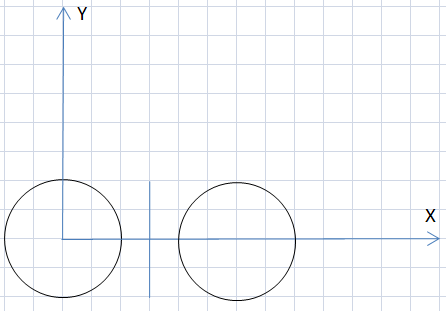3466.Looking for Owls
Time Limit: 1s Memory Limit: 256MBEmperor Palpatine loves owls very much. The emperor has some blueprints with the new Death Star, the blueprints contain n distinct segments and m distinct circles. We will consider the segments indexed from 1 to n in some way and the circles - indexed from 1 to m in some way.
Palpatine defines an owl as a set of a pair of distinct circles (i,j) (i \lt j) and one segment k, such that:
circles i and j are symmetrical relatively to the straight line containing segment k; circles i and j don't have any common points; circles i and j have the same radius; segment k intersects the segment that connects the centers of circles i and j.
Help Palpatine, count the number of distinct owls on the picture.
Input Format(From the terminal/stdin)
The first line contains two integers - n and m (1 \le n \le 3 \cdot 105, 2 \le m \le 1500).
The next n lines contain four integers each, x1, y1, x2, y2 - the coordinates of the two endpoints of the segment. It's guaranteed that each segment has positive length.
The next m lines contain three integers each, xi, yi, ri - the coordinates of the center and the radius of the i-th circle. All coordinates are integers of at most 104 in their absolute value. The radius is a positive integer of at most 104.
It is guaranteed that all segments and all circles are dictinct.
Output Format(To the terminal/stdout)
Print a single number - the answer to the problem.
Please, do not use the %lld specifier to output 64-bit integers is C++. It is preferred to use the cout stream or the %I64d specifier.
Sample Input 2
3 2 0 0 0 1 0 -1 0 1 0 -1 0 0 2 0 1 -2 0 1· \n · · · \n · · · \n · · · \n · · \n · · \n
Sample Output 2
3\n
Sample Input 3
1 2 -1 0 1 0 -100 0 1 100 0 1· \n · · · \n · · \n · · \n
Sample Output 3
0\n
Hints
Here's an owl from the first sample. The owl is sitting and waiting for you to count it.
